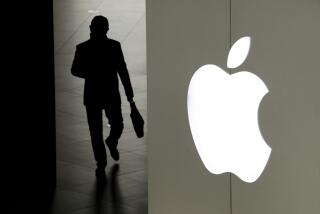News Analysis: Sonos shows the danger of a hardware-only business model
How long should a manufacturer be responsible for maintaining support for legacy products?
Consumer devices have increasingly become smart and connected, only to later be abandoned by the manufacturer. Smart suitcases have turned dumb, talking toys gone mute, and wireless security cameras bricked into paperweights. Most recently, Sonos got a lot of grief for announcing that older versions of its smart home speakers would soon lose access to services and functionality. Customers complained that they had spent thousands on their audio systems, with some products still on the market as recently as 2015.
A hardware device is a one-time purchase, while software updates require continual labor. As technology improves and devices last longer, the initial manufacturing cost may end up being a small proportion of the total lifetime cost of production. Many manufacturers have shifted to business models that treat the device sale as a loss leader for future revenue streams. Amazon can afford to underprice the Echo because it enables consumers to buy more stuff from Amazon; Google and Spotify teamed up to give away Google Home Minis; and even Apple recently lowered prices on its iPhones to grow a user base for its subscription services.
At the more controversial end of the spectrum, companies such as John Deere have used the Digital Millennium Copyright Act to legally prevent users from repairing their own equipment, forcing their customers to continue paying into a lucrative repair market.
Sonos boxed itself into a corner early on by promising customers free software updates for life. Chief Executive Patrick Spence testified at a congressional hearing this month: “Our business model is simple — we sell products which people pay for once, and we make them better over time with software updates.”
The Santa Barbara company is in a particularly difficult position because Sonos began as a home audio company before the advent of smart home assistants. Its earliest speakers weren’t designed with the processing power and storage required to take advantage of today’s features.
To minimize complexity, Sonos designed its audio system so that all devices in a home network would share the same software. Once one product is no longer eligible for updates, the whole setup would stop receiving updates. Sonos customers lodged public complaints and bullied the company into submission. Sonos promised to keep the updates coming.
A better long-term solution for the company might be found by looking to a different coalition of rebellious customers: a group that has been quietly reverse-engineering their speakers to liberate them from the company’s software entirely. It’s not an easy task. A Sonos speaker integrates a speaker and a microprocessor running a proprietary operating system. In order to jailbreak the speaker, users must gain access to the internal hardware and install their own software.
It would no doubt please these customers were Sonos to make their legacy speakers open source. Sonos has already indicated that the company can remotely erase the software; it could similarly perform a remote reinstallation of an open-source operating system such as Linux or Android. The company’s tech-savvy fans could then continue to improve the software — which could be downloaded by other users — while Sonos focuses on its core competency of manufacturing high-end speakers.
In the future, device manufacturers may be less generous about promising a lifetime of free software support. After all, most technological improvements these days are done in software. When it comes to cars, the internal combustion engine hasn’t changed much since fuel injectors were introduced in the 1980s. The performance improvements seen in recent decades have come from better sensors and smarter software to interpret sensor data.
Autonomous vehicles will have an even tougher sell, as it’s inevitable that self-driving technology will continue to improve after initial release. Will further updates be free, or will the vehicle manufacturer hold consumer safety for ransom?
While it’s easy to insist that customers should have free access to software updates running on devices they rightfully own, it’s hard to reconcile a sustainable business model with a lifetime of free software. A device that requires a paid subscription or leaves software updates as an exercise for the customer is better than one that turns into a brick.






